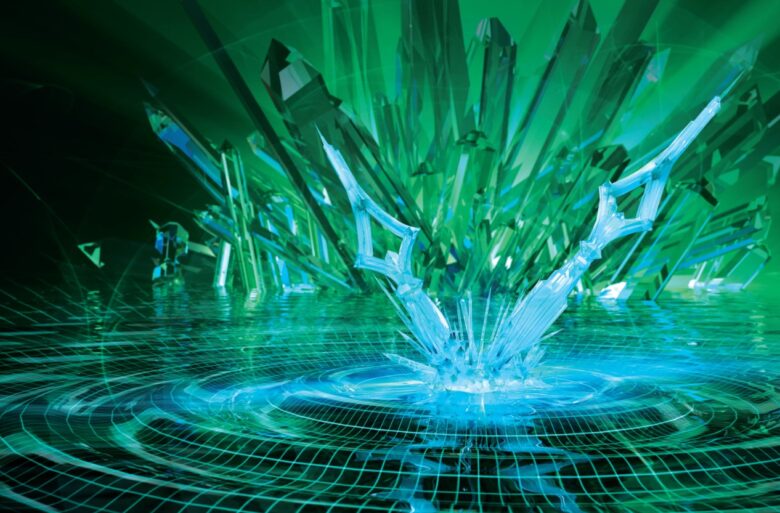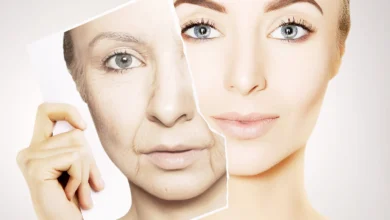
Crystal Healing Realities: What Science Tells Us About Healing Crystals
In recent years, the fascination with alternative healing methods has surged, and one practice that has captured the imagination of many is crystal healing.
Advocates of this ancient tradition claim that certain crystals possess unique energies that can promote physical, emotional, and spiritual healing.
Despite the mystical allure, it’s crucial to take a closer look at the science behind crystal healing to distinguish fact from fiction.
Historical Context: Ancient Cultures and Crystal Use
The roots of crystal healing stretch deep into history, spanning cultures from ancient Egypt to indigenous tribes. These civilizations revered crystals for their alleged abilities to amplify intentions, restore balance, and ward off negative energies.
Crystals like amethyst and quartz were thought to possess special powers, and their presence in burial sites and religious ceremonies is a testament to their significance.
However, historical use doesn’t inherently validate healing’s efficacy in a modern context. In the realm of the contemporary, this ancient practice has found a resurgence in various settings, including new age and crystal shops in NYC, where enthusiasts seek to embrace and adapt these age-old beliefs for present-day wellness pursuits.
Crystal Energy Claims: Healing Properties and Anecdotes

Amethyst is associated with calm, whereas rose quartz is associated with nourishing love, according to proponents of this therapy. Numerous people claim to feel better after using them, however, it is impossible to ignore the placebo effect and subjectivity.
Anecdotes depict a dramatic change, but it’s difficult to distinguish between real induced benefits and psychological factors. Determining whether perceived advantages result from natural qualities or psychological causes is difficult.
To understand the underlying nature of these claims and determine if the observed changes actually result from the qualities or whether they are mostly influenced by the intricate interactions between belief, perception, and the human psyche, scientific analysis is essential.
Scientific Skepticism: Lack of Empirical Evidence in Crystal Healing
Scientific skepticism casts a critical light on rehab, highlighting a notable absence of empirical evidence to substantiate its claims. The dearth of robust studies revealing a definitive link between application and recovery outcomes stands as a significant concern.
Skeptics contend that the apparent benefits might be attributable to the placebo effect or confirmation bias, rather than any inherent properties of the crystals themselves. Without well-designed research demonstrating consistent and measurable effects, crystal recovery foundational assertions lose their scientific credibility.
The absence of empirical validation underscores the need for rigorous investigation to establish legitimacy as a viable therapeutic practice within the realm of evidence-based science.
Placebo Effect: Psychological Impact on Well-being

The placebo effect is a powerful psychological phenomenon where a person experiences real improvements due to believing in a treatment’s efficacy.
In the realm of healing, the placebo effect is particularly relevant. When individuals firmly believe in energy and healing properties, their perception of well-being can genuinely improve.
While this doesn’t confirm their inherent powers, it highlights the remarkable connection between belief and well-being.
Mineral Composition: Crystals’ Unique Structures and Properties
They are formed through intricate geological processes that result in their unique structures and compositions. This distinctiveness contributes to their aesthetic appeal and, in some cases, their alleged healing properties.
For example, clear quartz is prized for its ability to amplify energy due to its molecular arrangement.
While these structural traits are scientifically verifiable, translating them into direct healing effects requires more than just crystallography.
Energy and Vibrations: Examining Metaphysical Principles
The basis of therapy is the idea of energy and vibrations, which states that certain crystals resonate at specific frequencies, harmonizing with and having an effect on the body’s energetic matrix. However, this premise deviates from accepted scientific norms and enters a metaphysical area.
Although energy and vibrations are important in physics, there is little evidence to support the extension of vibrations to therapeutic benefits.
The relationship between these metaphysical ideas and therapeutic outcomes is still speculative and unproven within the scope of mainstream science.
To close this gap and reveal the possible link between vibrations and real therapeutic advantages, further study is required that connects metaphysical ideas with facts.
Quantum Physics Perspective: Resonance and Crystal Energy

Some enthusiasts invoke quantum physics to support their claims. They propose that vibrations can resonate with human energies, leading to healing effects.
While there’s no denying the fascinating principles within quantum physics, using them to validate therapeutic ventures into pseudoscience territory.
Quantum phenomena are complex and often counterintuitive, and drawing a direct line between these concepts and energy requires substantial leaps in logic.
Research Gaps: Limited Studies on Crystal Healing Efficacy
The lack of rigorous scientific research is a glaring concern for healing’s credibility. Despite its popularity, very few controlled studies have investigated its efficacy.
The studies that do exist are often criticized for their methodological flaws and small sample sizes. To truly assess healing’s potential, large-scale, well-designed clinical trials are essential.
Until then, it’s difficult to ascertain whether any perceived benefits are genuine or simply the result of the placebo effect.
Alternative Therapies: Comparing Crystal Healing to Established Practices
In the realm of alternative therapies, crystal healing is just one among many. Practices like acupuncture, aromatherapy, and meditation have gained recognition for their potential to enhance well-being.
However, these practices often exhibit a degree of scientific plausibility or physiological effects. In contrast, recovery’s lack of empirical grounding sets it apart.
When comparing alternative therapies, it’s crucial to differentiate between those with some level of scientific support and those that lean heavily on anecdotal claims.
Conclusion: Balanced View Merging Belief, Science, and Personal Choice

In the world of crystal healing, the clash between belief and scientific evidence is apparent.
While crystal recovery carries a rich historical tapestry and boasts countless personal testimonials, its lack of empirical support raises eyebrows within the scientific community.
The placebo effect, while remarkable, underscores the role of belief in shaping our well-being. As individuals, it’s essential to make informed choices.
Engaging with crystal healing can be an enriching personal experience, provided we acknowledge the uncertainties surrounding its efficacy.
By merging belief, science, and personal choice, we can navigate the realm of crystal healing with a balanced perspective.




